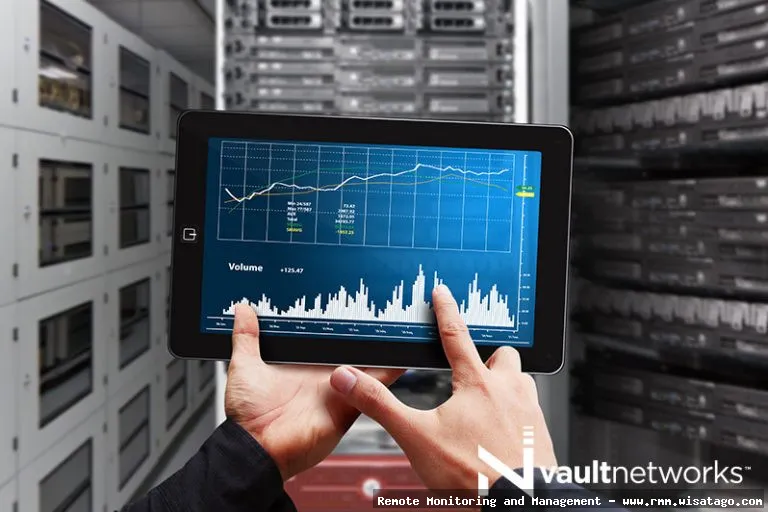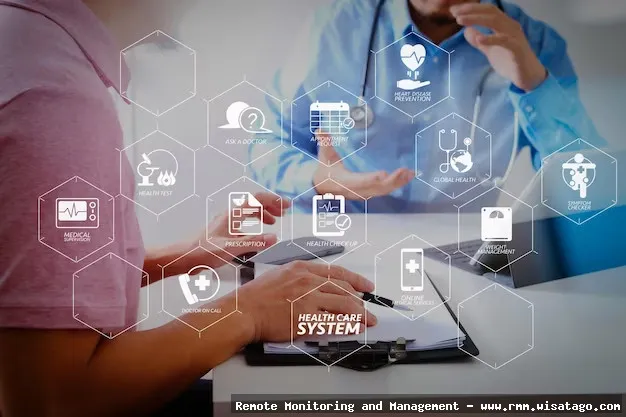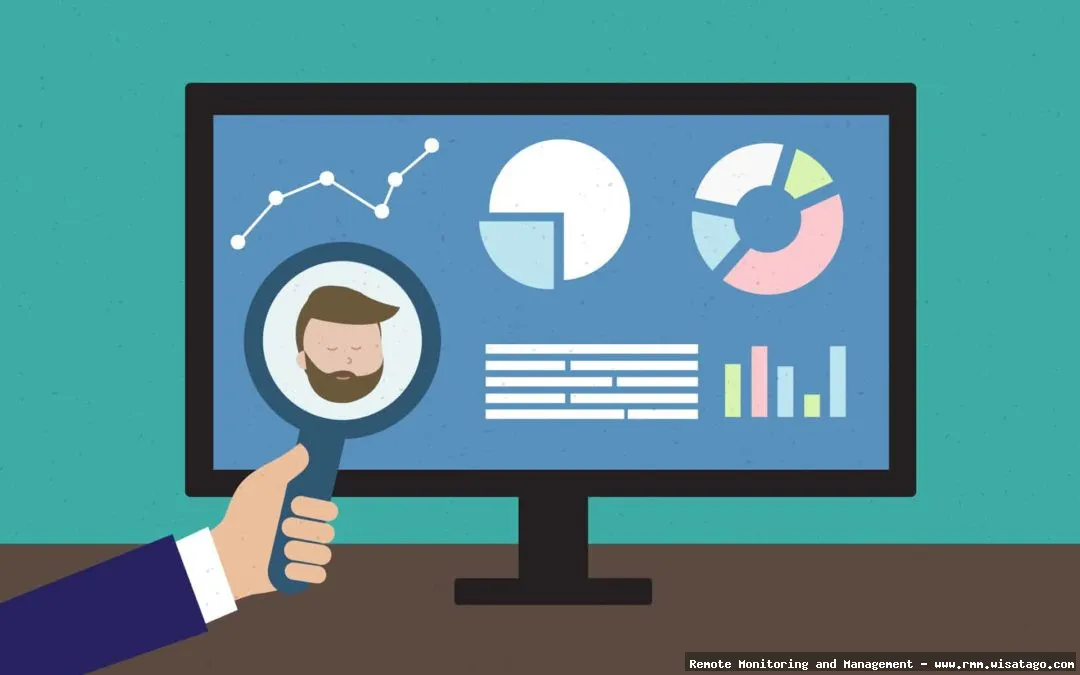In today’s fast-paced IT landscape, downtime isn’t just an inconvenience; it’s a business killer. As IT professionals, we’re constantly juggling a multitude of responsibilities, from managing network infrastructure to ensuring endpoint security. Keeping a watchful eye on everything, especially when dealing with geographically dispersed teams or remote workforces, can feel like an impossible task. That’s where Remote Monitoring and Management (RMM) platforms come into play. They’re not just a luxury anymore; they’re a necessity for proactive IT management and business continuity.
RMM platforms provide a centralized solution for monitoring, managing, and securing IT infrastructure remotely. Think of it as having a virtual IT technician constantly monitoring your systems, alerting you to potential problems before they escalate into full-blown crises. This proactive approach allows us to address issues quickly, minimize downtime, and ultimately, improve the overall efficiency of our IT operations. But with so many RMM solutions available, choosing the right one for your specific needs can be a daunting task. This guide aims to simplify that process by exploring some of the top-tier RMM platforms on the market, highlighting their key features, and discussing the considerations for successful implementation.

This article is designed to provide a comprehensive overview of RMM, focusing on practical applications and real-world scenarios. We’ll delve into the core functionalities of these platforms, discuss the benefits of implementing an RMM strategy, and address some of the common challenges you might encounter along the way. Whether you’re a seasoned IT veteran or just starting to explore the world of RMM, this guide will equip you with the knowledge you need to make informed decisions and select the right solution for your organization. Let’s dive in!
What is Remote Monitoring and Management (RMM)?
Remote Monitoring and Management (RMM) is a comprehensive suite of tools and technologies designed to remotely monitor, manage, and support IT systems and endpoints. It allows IT professionals to proactively identify and resolve issues, maintain system health, and ensure optimal performance, all from a central location. Think of it as a single pane of glass providing visibility into your entire IT infrastructure. Effective IT management often involves proactive strategies, and RMM plays a crucial role in enabling that approach
.
Core Functionalities of RMM Platforms
RMM platforms typically include a range of features, including:
- Remote Monitoring: Continuous monitoring of servers, workstations, networks, and other IT assets to detect performance issues, security threats, and potential failures.
- Remote Access: Secure and reliable remote access to managed devices for troubleshooting, maintenance, and support.
- Patch Management: Automated patching of operating systems and applications to keep systems up-to-date and secure.
- Asset Management: Detailed inventory and tracking of hardware and software assets, including configuration details, license information, and warranty status.
- Alerting and Notifications: Real-time alerts and notifications when critical issues are detected, allowing for proactive intervention.
- Automation: Automated tasks and workflows to streamline repetitive tasks, such as software deployments, script execution, and system maintenance.
- Reporting and Analytics: Comprehensive reports and analytics on system performance, security posture, and IT service delivery.
- Security Management: Features such as antivirus integration, vulnerability scanning, and security policy enforcement to protect managed devices from threats.
Benefits of Implementing an RMM Solution
Implementing an RMM solution offers a multitude of benefits for IT professionals and organizations alike. These benefits extend beyond simply streamlining IT operations; they contribute to improved business efficiency, reduced costs, and enhanced security.
Proactive Issue Resolution
One of the most significant advantages of RMM is its ability to proactively identify and resolve issues before they impact end-users. By continuously monitoring systems and networks, RMM platforms can detect performance bottlenecks, security vulnerabilities, and potential failures. This allows IT teams to address these issues promptly, minimizing downtime and preventing costly disruptions.
Improved Efficiency and Productivity
RMM automates many of the routine tasks that IT professionals typically handle manually, such as patch management, software deployments, and system maintenance. This automation frees up IT staff to focus on more strategic initiatives, such as improving IT infrastructure, developing new solutions, and supporting business growth. Furthermore, centralized management capabilities reduce the time and effort required to manage distributed IT environments.
Enhanced Security Posture
Security is a top priority for every organization, and RMM plays a crucial role in enhancing security posture. RMM platforms often include features such as antivirus integration, vulnerability scanning, and security policy enforcement. By continuously monitoring systems for threats and vulnerabilities, RMM can help organizations proactively identify and mitigate security risks. Automated patch management ensures that systems are up-to-date with the latest security patches, reducing the risk of exploitation.
Reduced Costs
While implementing an RMM solution requires an initial investment, the long-term cost savings can be substantial. By proactively preventing downtime, automating routine tasks, and improving IT efficiency, RMM can help organizations reduce IT costs significantly. Reduced downtime translates to increased productivity and revenue, while automated tasks free up IT staff to focus on more valuable activities. Furthermore, RMM can help organizations optimize their IT infrastructure and reduce the need for expensive hardware upgrades.

Better Visibility and Control
RMM provides a centralized view of the entire IT infrastructure, giving IT professionals greater visibility and control over their systems. This visibility allows for better decision-making, improved resource allocation, and more effective IT management. Comprehensive reporting and analytics provide valuable insights into system performance, security posture, and IT service delivery, enabling organizations to identify areas for improvement and optimize their IT operations.
Top-Tier RMM Platforms: A Comparison
Choosing the right RMM platform is crucial for achieving the desired benefits. Here’s a look at some of the leading RMM platforms, highlighting their key features and strengths.
ConnectWise Automate
ConnectWise Automate is a comprehensive RMM platform designed for managed service providers (MSPs) and IT service providers. It offers a wide range of features, including remote monitoring, remote access, patch management, asset management, and automation. ConnectWise Automate is known for its robust automation capabilities and its extensive integration with other ConnectWise solutions, such as ConnectWise Manage and ConnectWise Sell.
- Pros: Highly customizable, powerful automation engine, strong integration with other ConnectWise products.
- Cons: Can be complex to configure and manage, higher learning curve.
Datto RMM
Datto RMM is a cloud-based RMM platform that offers a user-friendly interface and a comprehensive set of features. It includes remote monitoring, remote access, patch management, asset management, and security management. Datto RMM is known for its ease of use, its robust security features, and its integration with Datto’s backup and disaster recovery solutions.
- Pros: Easy to use, strong security features, excellent integration with Datto’s BCDR solutions.
- Cons: Can be more expensive than some other RMM platforms.
NinjaOne
NinjaOne (formerly NinjaRMM) is a modern, cloud-based RMM platform that focuses on simplicity and ease of use. It offers a comprehensive set of features, including remote monitoring, remote access, patch management, asset management, and endpoint management. NinjaOne is known for its intuitive interface, its rapid deployment capabilities, and its strong focus on customer support.
- Pros: Very user-friendly, fast deployment, excellent customer support.
- Cons: May lack some of the advanced features found in more complex RMM platforms.
SolarWinds N-central
SolarWinds N-central is a powerful RMM platform that offers a wide range of features, including remote monitoring, remote access, patch management, asset management, and security management. It is designed for MSPs and IT service providers who need a robust and scalable RMM solution. SolarWinds N-central is known for its comprehensive feature set, its advanced reporting capabilities, and its integration with other SolarWinds products.
- Pros: Comprehensive feature set, advanced reporting, strong integration with other SolarWinds products.
- Cons: Can be complex to configure and manage, steeper learning curve.
Kaseya VSA
Kaseya VSA is a comprehensive RMM and automation platform designed for MSPs and internal IT teams. It provides a unified platform for managing endpoints, networks, and security. Kaseya VSA is known for its extensive automation capabilities and its ability to manage complex IT environments.
- Pros: Strong automation capabilities, extensive feature set, suitable for complex environments.
- Cons: Can be complex to configure and manage, potential security concerns have been raised in the past.
Challenges of Implementing RMM
While RMM offers significant benefits, implementing an RMM solution can present several challenges. Understanding these challenges and planning for them can help ensure a successful implementation.

Initial Setup and Configuration
Setting up and configuring an RMM platform can be a complex and time-consuming process. It requires careful planning, configuration, and customization to ensure that the platform is properly aligned with the organization’s specific needs and requirements. This may involve configuring monitoring thresholds, setting up alerts, and customizing reports.
Integration with Existing Systems
Integrating an RMM platform with existing IT systems, such as ticketing systems, CRM systems, and security solutions, can be challenging. Ensuring seamless integration requires careful planning and coordination. Compatibility issues may arise, and custom integrations may be necessary.
Training and Adoption
Successfully implementing an RMM solution requires adequate training and adoption by IT staff. IT professionals need to be trained on how to use the platform effectively, including how to configure monitoring settings, respond to alerts, and generate reports. Resistance to change and lack of buy-in from IT staff can hinder adoption.
Security Considerations
Security is a critical consideration when implementing an RMM solution. RMM platforms have access to sensitive information and control over managed devices, making them a potential target for cyberattacks. Organizations need to ensure that their RMM platform is properly secured and that appropriate security measures are in place to protect against unauthorized access and data breaches. This includes implementing strong authentication, encrypting data, and regularly patching the RMM platform.
Cost Management
RMM solutions can be expensive, and it’s important to carefully manage costs to ensure that the investment is justified. Costs can vary depending on the number of devices managed, the features used, and the vendor chosen. Organizations need to carefully evaluate their needs and budget to select the right RMM platform and avoid overspending. Hidden costs, such as implementation fees and training costs, should also be considered.
Best Practices for RMM Implementation
To maximize the benefits of RMM and minimize the challenges, consider these best practices:
- Define clear goals and objectives: Before implementing an RMM solution, clearly define your goals and objectives. What do you want to achieve with RMM? What problems are you trying to solve?
- Choose the right RMM platform: Carefully evaluate your needs and requirements to select the right RMM platform for your organization. Consider factors such as features, ease of use, cost, and integration capabilities.
- Plan your implementation: Develop a detailed implementation plan that outlines the steps involved in setting up and configuring the RMM platform.
- Provide adequate training: Ensure that IT staff receive adequate training on how to use the RMM platform effectively.
- Monitor and optimize: Continuously monitor the performance of the RMM platform and optimize its configuration to ensure that it is meeting your needs.
- Regularly review security settings: Regularly review and update security settings to protect against unauthorized access and data breaches.
Conclusion
Remote Monitoring and Management platforms are essential tools for modern IT professionals. They enable proactive issue resolution, improve efficiency, enhance security, and reduce costs. By carefully selecting the right RMM platform and following best practices for implementation, organizations can leverage RMM to optimize their IT operations and achieve their business goals. While the implementation process can present challenges, the long-term benefits of RMM far outweigh the initial hurdles. Embrace RMM, and empower your IT team to become more proactive, efficient, and secure.
Conclusion
In the ever-evolving landscape of IT, proactive and efficient remote monitoring is no longer a luxury, but a necessity. As we’ve explored, several top-tier platforms offer a comprehensive suite of tools to ensure optimal system performance, rapid issue resolution, and minimized downtime. Choosing the right platform hinges on understanding your specific organizational needs, budget, and technical expertise. Factors such as scalability, integration capabilities, and the level of customization offered should be carefully considered before making a final decision.
Ultimately, investing in a robust remote monitoring platform translates to improved operational efficiency, enhanced security posture, and a more resilient IT infrastructure. We encourage IT professionals to thoroughly evaluate the platforms discussed and leverage free trials or demos to gain firsthand experience. By making an informed choice and implementing a well-defined monitoring strategy, you can empower your IT team to proactively address challenges, ensure business continuity, and drive innovation. Take the next step towards a more secure and efficient IT environment today. Consider exploring detailed product comparisons and independent reviews on sites like www.example.com/review-site to further refine your selection process.
Frequently Asked Questions (FAQ) about Top-Tier Remote Monitoring Platforms for IT Professionals
What are the key features I should look for when selecting a remote monitoring and management (RMM) platform to proactively manage my client’s IT infrastructure?
Choosing the right RMM platform is crucial for efficiently managing client IT infrastructure. Key features to consider include robust remote access capabilities for troubleshooting and resolving issues without being physically present. Comprehensive monitoring and alerting are essential to proactively identify potential problems before they impact users. Look for features like automated patch management to keep systems secure and up-to-date, as well as detailed reporting and analytics to track performance and identify trends. Integration with other tools, such as ticketing systems and security solutions, is also important for streamlining workflows. Scalability and ease of use are also vital considerations, especially as your client base grows. Finally, ensure the platform offers strong security features to protect sensitive data and prevent unauthorized access.
How can a remote monitoring platform help me improve the efficiency and reduce the downtime of my managed services business?
A remote monitoring platform significantly enhances the efficiency and reduces downtime for managed services businesses. By providing real-time monitoring of servers, networks, and applications, these platforms enable proactive identification and resolution of issues before they escalate. Automated alerts notify IT professionals of potential problems, allowing for timely intervention. Furthermore, features like remote access and automated remediation can resolve many issues without requiring on-site visits, saving time and resources. The platform’s reporting and analytics capabilities provide valuable insights into system performance, helping identify areas for improvement and optimize resource allocation. This proactive approach minimizes downtime, enhances client satisfaction, and allows IT professionals to focus on strategic initiatives rather than reactive firefighting.
What are some common mistakes to avoid when implementing a new remote monitoring and management (RMM) solution, and how can I ensure a smooth transition?
Implementing a new RMM solution requires careful planning to avoid common pitfalls. A major mistake is failing to properly define your specific needs and goals before selecting a platform. Without clear objectives, it’s easy to choose a solution that doesn’t fully address your requirements. Another common error is neglecting to adequately train your team on the new platform. Proper training ensures that your staff can effectively utilize all the features and benefits of the RMM solution. Data migration can also be a challenge, so plan this carefully to avoid data loss or corruption. Finally, don’t underestimate the importance of ongoing maintenance and optimization. Regularly review your monitoring configurations, update your software, and adapt your processes as needed to ensure the platform continues to meet your evolving needs. Ensuring a smooth transition involves thorough planning, adequate training, and continuous optimization.